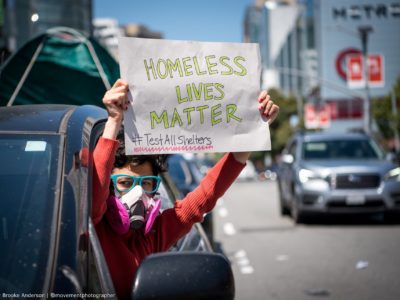North Hartford, Connecticut, is a community of highly-engaged residents, but they face serious challenges. Some challenges are visible— blighted property, neglected schools and parks, a lack of basic amenities like grocery stores. Others are more hidden, like frequent evictions, crime, chronic joblessness, and health disparities. Yet the community has hidden strengths and assets too. We’re helping the community combat the conditions contributing to homelessness by using data to make opportunities more visible.
Part of the problem is that the conditions that create homelessness are all connected, but the data reflecting these conditions often isn’t. Our team works with residents and partner organizations to integrate the picture. Using data drawn from public sources, such as eviction and crime records; de-identified Medicaid claims; and survey data contributed by residents on their specific challenges and strengths, we’re creating a multi-dimensional baseline view of the neighborhood. This data reveals patterns— like the connection between poor housing and poor health, for example— and shows which organizations need to be collaborating in new ways to make sure assistance is reaching those who need it the most.
As a starting point, our Community Health Manager Nadia Lugo guided a neighborhood Health Risk Assessment, funded by Cigna and staffed by residents, to document the self-reported health and well-being of local families. Building on this research, Nadia and our Community Engagement Coordinator John Thomas worked with University of Connecticut interns and teens participating in summer youth employment programs to map the conditions of all neighborhood properties. With support from GiS Corps, Trinity College’s Action Lab, and ESRI, Nadia is now creating a single dashboard to allow residents and partner organizations to see “hot spots:” the places where problems or surprising opportunities cluster.
Integrated data is already driving new ways of working in North Hartford. Our team has brought together residents and institutions to:
- Identify the neighborhood’s most frequent users of partner St. Francis Hospital’s emergency room, then work with those individuals to sort out the housing, legal, transportation, and other challenges that were showing up as health emergencies.
- Piece together records on neighborhood evictions to understand the dimensions of the problem and inform our current housing stabilization efforts.
- Develop a comprehensive response to childhood asthma, which is rampant in the neighborhood and also the most expensive area of Medicaid spending in North Hartford. With partners and affected families, we’re developing a plan linking schools, pediatricians, landlords, and community health workers to reduce hospitalizations and school and work absences caused by asthma.
Most dramatically, this year we begin the $35 million renovation of the former Swift Factory to bring more than 350 construction and long-term jobs to the neighborhood. Why take on this project? The local data showed the connection between long-term unemployment and homelessness.




